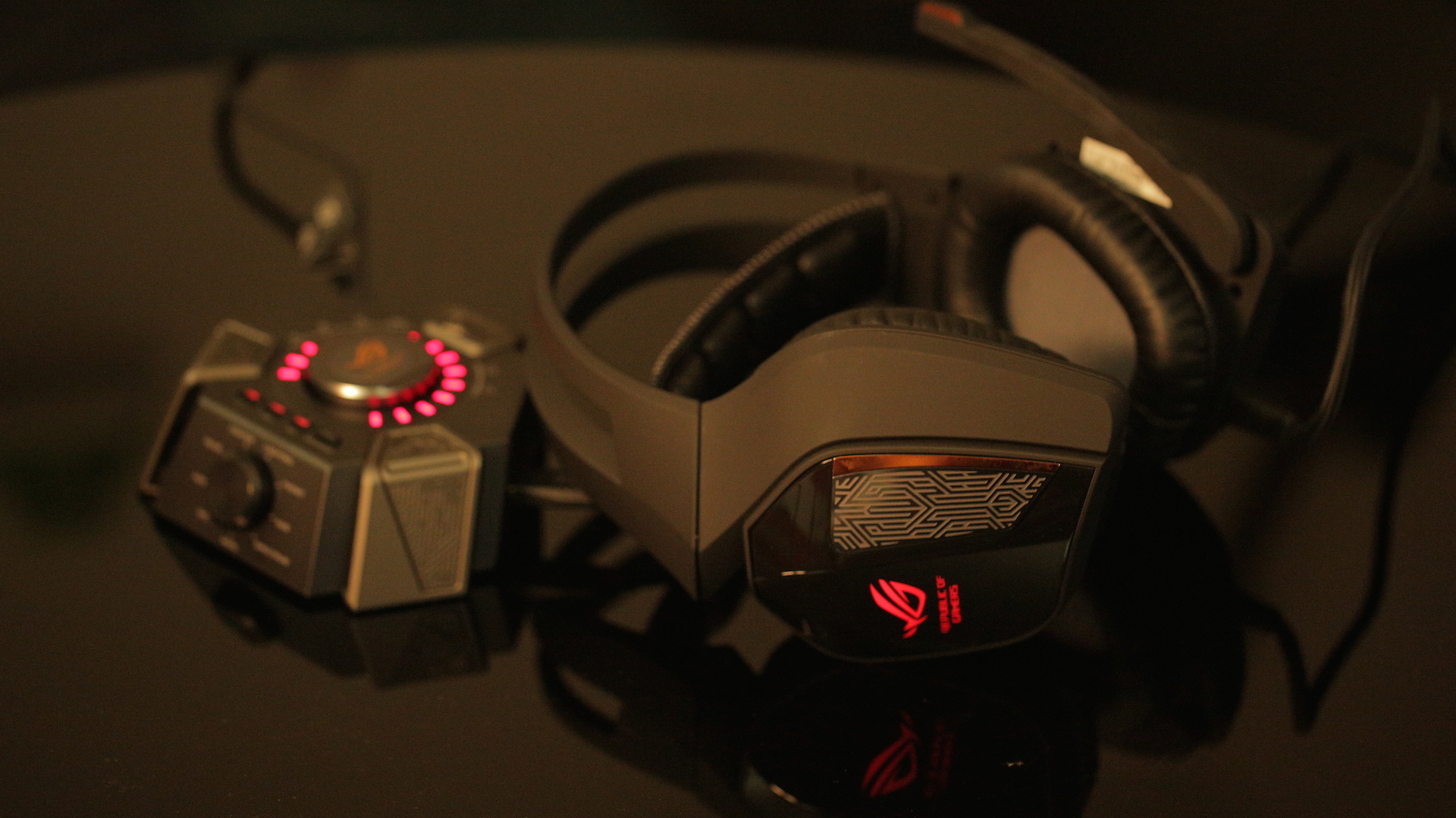TechRadar Verdict
If you can handle the Asus ROG Centurion’s weight and ostentatious design, the headset offers superb audio clarity and game-beating sound-manipulating features.
Pros
- +
Excellent spatial sound
- +
Speaker pass through
- +
Software gives an edge in shooters
- +
Includes display stand
Cons
- -
Can only be used with its amp
- -
Heavy and bulky
- -
Chunky cable
Why you can trust TechRadar
Does your love for PC gaming express itself with an LED-filled rig, multiple view-filling screens and a racing chair that wouldn’t look out of place in a starship cockpit? Then you’ll go gaga for Asus’s new ROG Centurion 7.1 gaming headset.
From its discrete, 10-driver 7.1 surround sound to its sci-fi design, it throws everything and the kitchen sink at demanding PC gamers – arguably at the expense of comfort and good taste, but certainly to the benefit of its audio quality.
The Asus ROG Centurion sure ain’t subtle, but it sure sounds good.
The headset will cost £219.99, and can be ordered from Overclockers. US and Australian pricing is to be confirmed, but direct currency conversion puts the Centurion at around $270, or AU$360.
Design
Ever wanted to look like a Tie Fighter pilot while playing Star Wars Battlefront? The Asus ROG Centurion will have you covered. A gargantuan black headset with orange and chrome accents, it’s one of the biggest headsets we’ve ever played with.

That has both its benefits and drawbacks. The default, giant leather cups (which can be swapped out with in-the-box fabric ones if you prefer) fully encompass the ear, doing a great job of passively keeping external sound out, while the large retractable microphone boom can be easily grabbed and pulled into action, flexing where needed. There’s a decent amount of breathability in the cups too – even after long sessions wearing them, your ears will stay relatively cool.

However, they are unavoidably bulky. With their own pulsing lights, you’ll definitely stand out at your next tournament, but their size hardly makes them portable – as evidenced by the included stand that accompanies the package. The ROG Centurion is definitely intended to take pride of place on your desk and travel nowhere else. They’re not heavy enough to be painful (liberal padding on the headband does its job well), but a lighter weight would make them more comfortable, and better suited to anyone without a head the size of a melon.
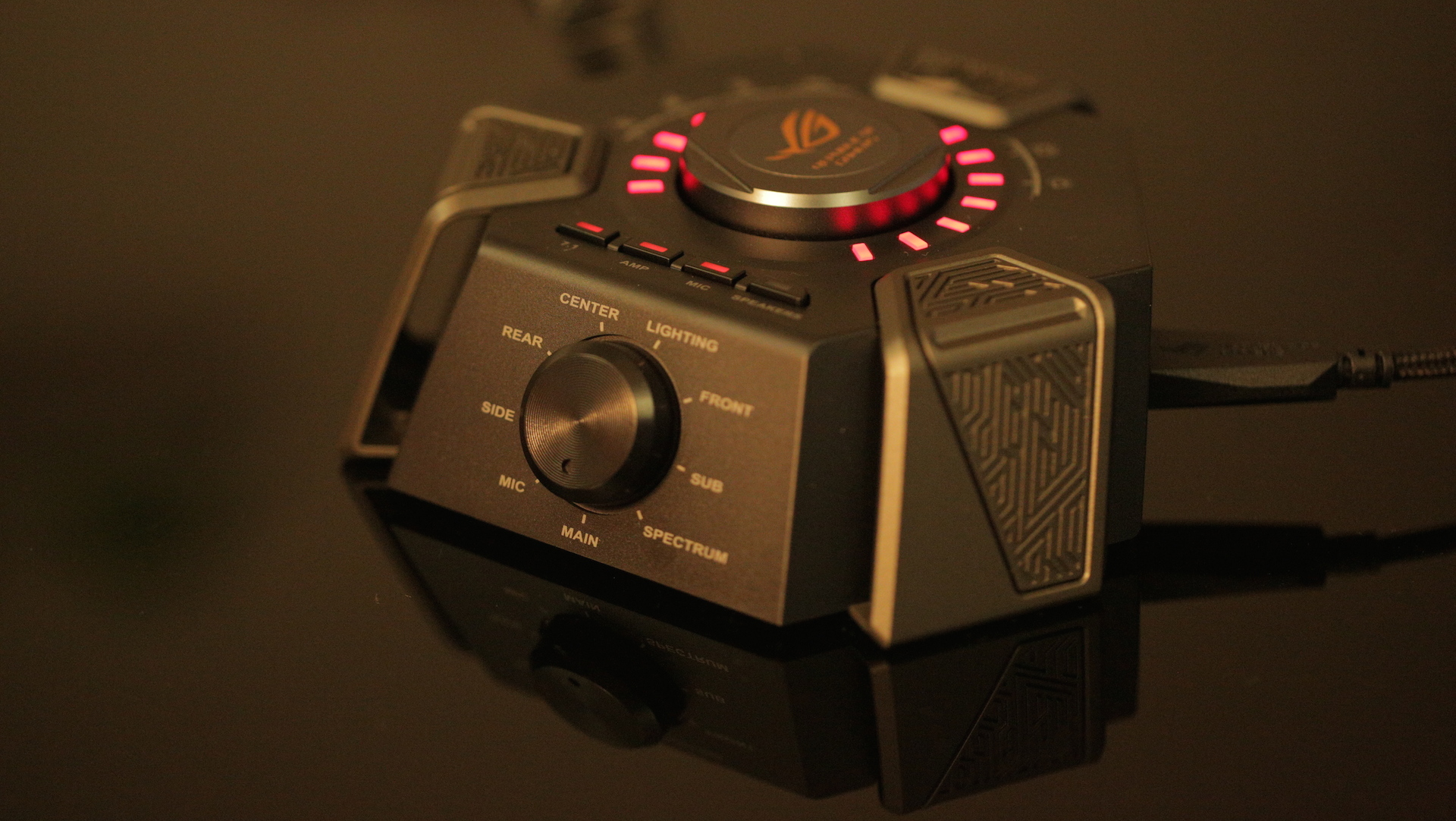
The-in-your-face design language continues over to the Centurion’s amp, a stout hexagonal prism about the size of a hockey puck. It’s laden with buttons to control 7.1 channel levels, master volume, speaker passthrough, mic muting and the Centurion’s myriad in-game audio profiles, and has enough indicator lights itself to start its own airport runway.
Setup and amp
Unlike some of its competition, the Asus ROG Centurion is a purely wired affair, meaning you’re tethered to your computer the whole time while wearing it. It’s doubly inflexible, however, due to the connection it uses. On the end of its fixed, thick braided cable sits a HDMI port to plug into the amp, rather than a more common USB connector, let alone a headphone jack.
This essentially means that the headset can only be used in conjunction with the Centurion’s amp. That cable can also get in the way a bit, being too rigid to comfortably drape down your neck and onto your shoulder.
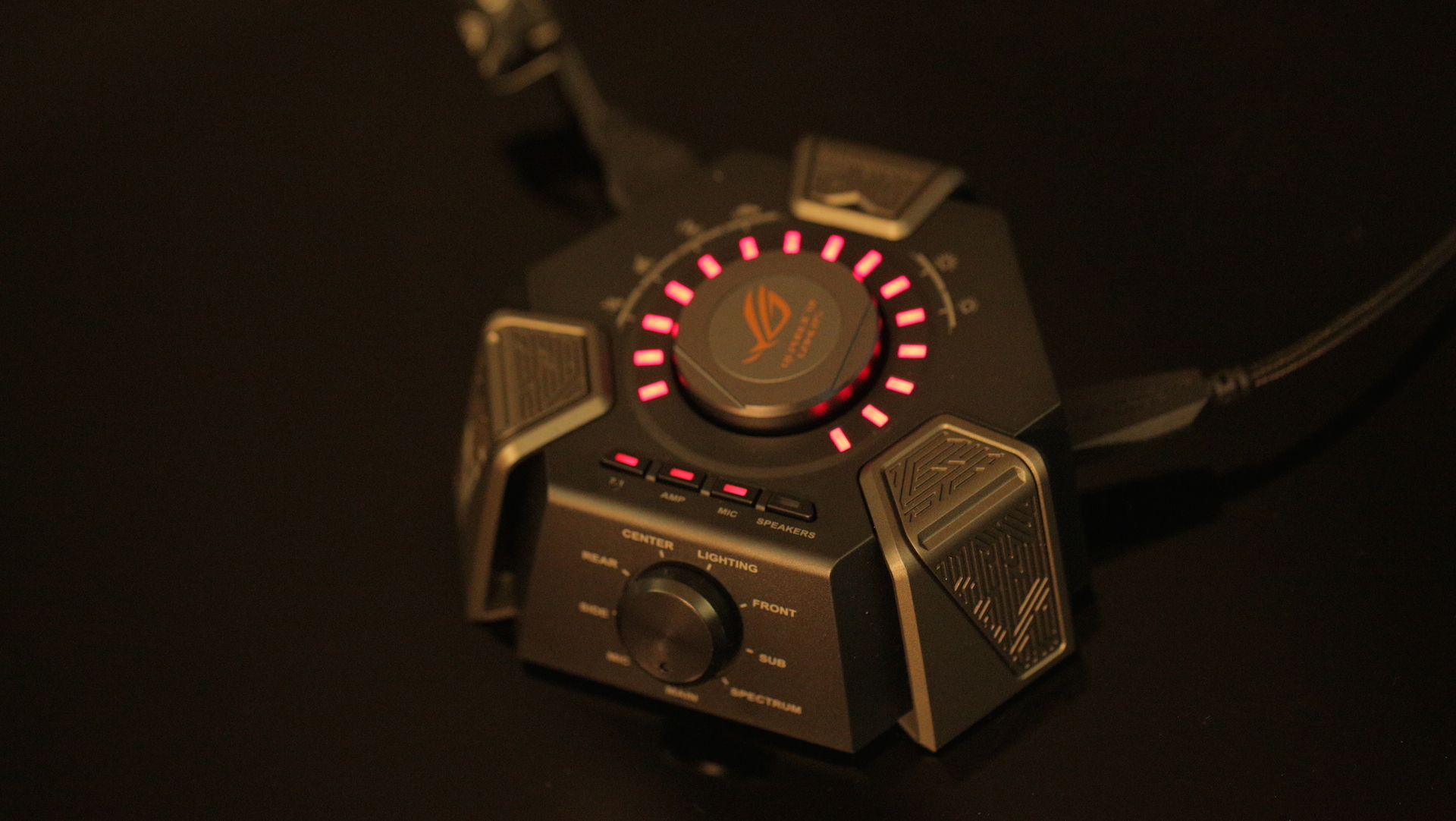
The imposing nature of the kit doesn’t stop there – the amp requires a two-way, Y-splitter USB cable connection with your PC, meaning you’ll need two spare USB ports to power the Centurion.
Dual-USB requirements can be justified however by just how much this little amp is doing. Not only is it driving your 7.1 channel experience, it’s also allowing for surround sound speaker passthrough, thanks to another HDMI connection cable, which splits off into the corresponding colored speaker channel jacks.
In addition, the amp is where you’ll control all the ROG Centurion’s audio profiles and channel volumes. The top central dial acts as a power and volume controller, while also letting you scroll between profiles. A secondary, smaller wheel on the front lets you pick between individual channels to tweak.
Along with four physical buttons for switching between 7.1 and stereo, activating the volume-boosting amp function, switching on the mic and jumping between the headset and stereo passthrough option, there’s a lot to take in. But, once you’ve got a grasp of all the controls, the amp’s dials give you unprecedented control over almost every aspect of its audio performance.
Sound quality
The Asus ROG Centurion 7.1 headset is not for the faint of heart then, but it more than justifies its boisterous build through the quality of its sound. When popped over your ears and powered up, it’s enough to make you lose track of time playing.
It manages to deliver a convincing 7.1 surround sound experience, thanks to its use of 10 individual drivers. Each ear cup houses five discrete neodymium magnets, finely tuned to give a sense of enveloping sound while you play.
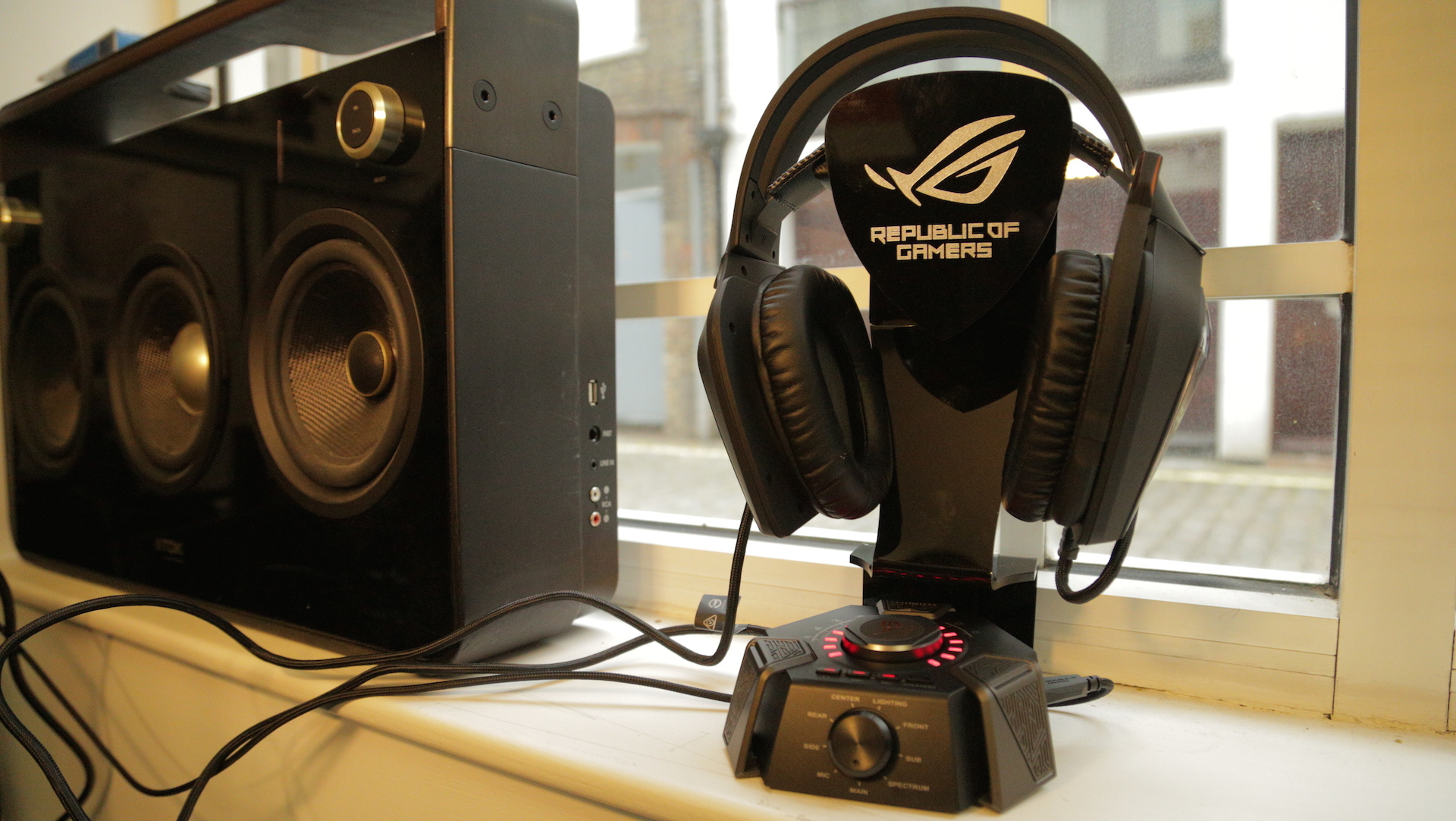
Though you can tweak EQ settings with an Asus software package (more on that in a second), by default it’s a warm and convincing soundstage. It’s not quite a match for dedicated surround speakers, but it’s certainly more accurately placing sounds than with a virtual surround set up employed by headphones not equipped with individual drivers.
Adjustable audio presets can be activated on the fly, too, thanks to the amp. Though there are options for highlighting gunfire, racing sounds and a vocal-boosting RPG option, it’s the FPS footsteps mode that’s likely to be the most useful. While it sounds like an unnatural mix of a first-person shooter’s audio, the tweaked frequencies let you easily pinpoint anyone sneaking up behind you, giving you an edge on the competition.
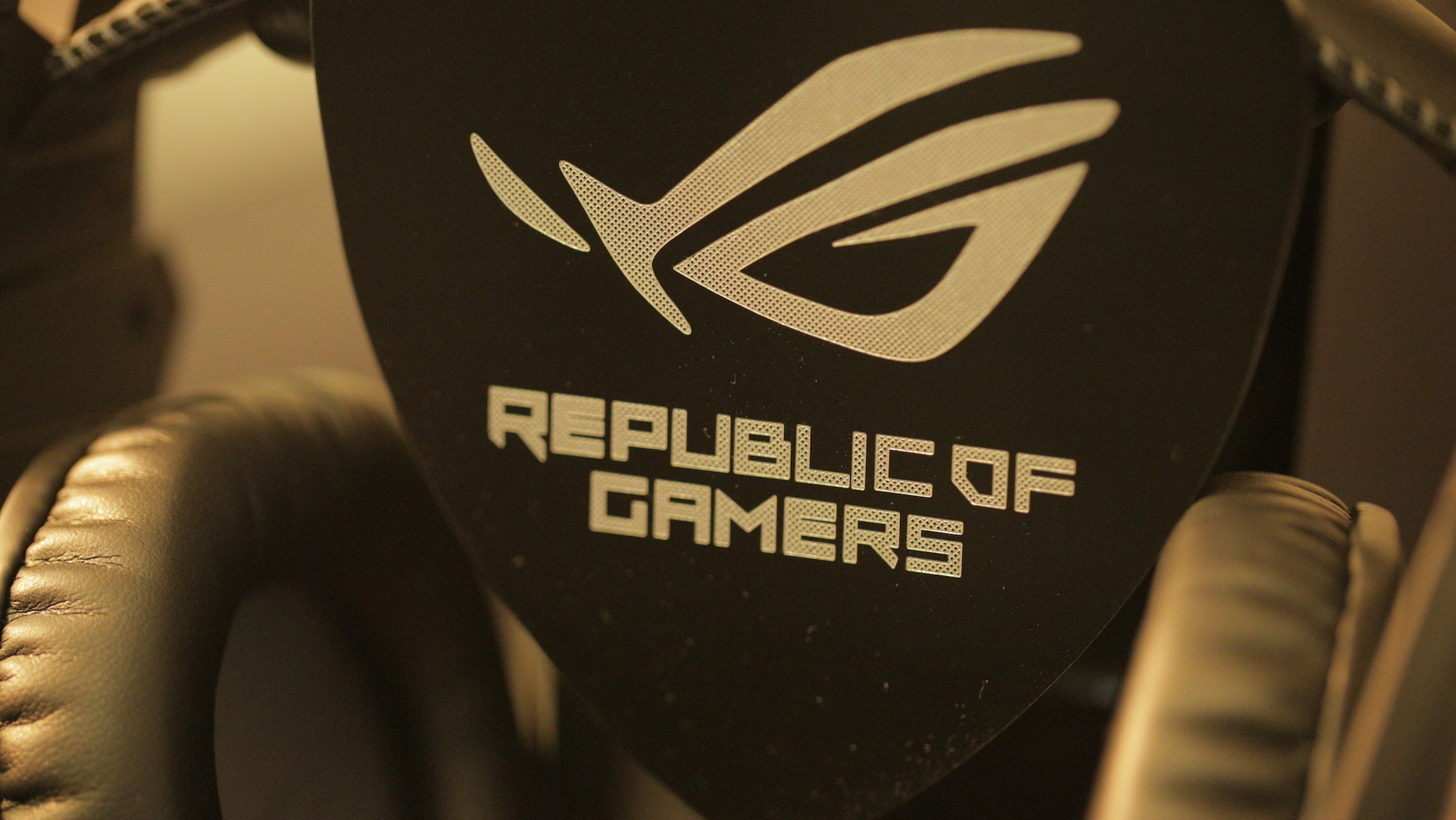
As such, it makes for an engrossing play experience. Whether I was immersed in the patter of rain through a Skyrim forest, or picking out enemy fire from behind in Borderlands 2, the ROG Centurion put me at the center of the game world.
Its mic performed admirably, too. With an unidirectional microphone at the end of its flexible arm, it’s able to discern between your voice input and any ambient noise that may otherwise annoy a fellow gamer on the other end, delivering crystal clear audio input.
Sonic Studio software
Head over to the Asus website, and you can pick up the accompanying Sonic Studio software package. This is a neat interface for controlling the ROG Centurion’s audio, in particular letting you tweak specific audio frequencies and reverb levels in the EQ to let you make your own personalised profiles.
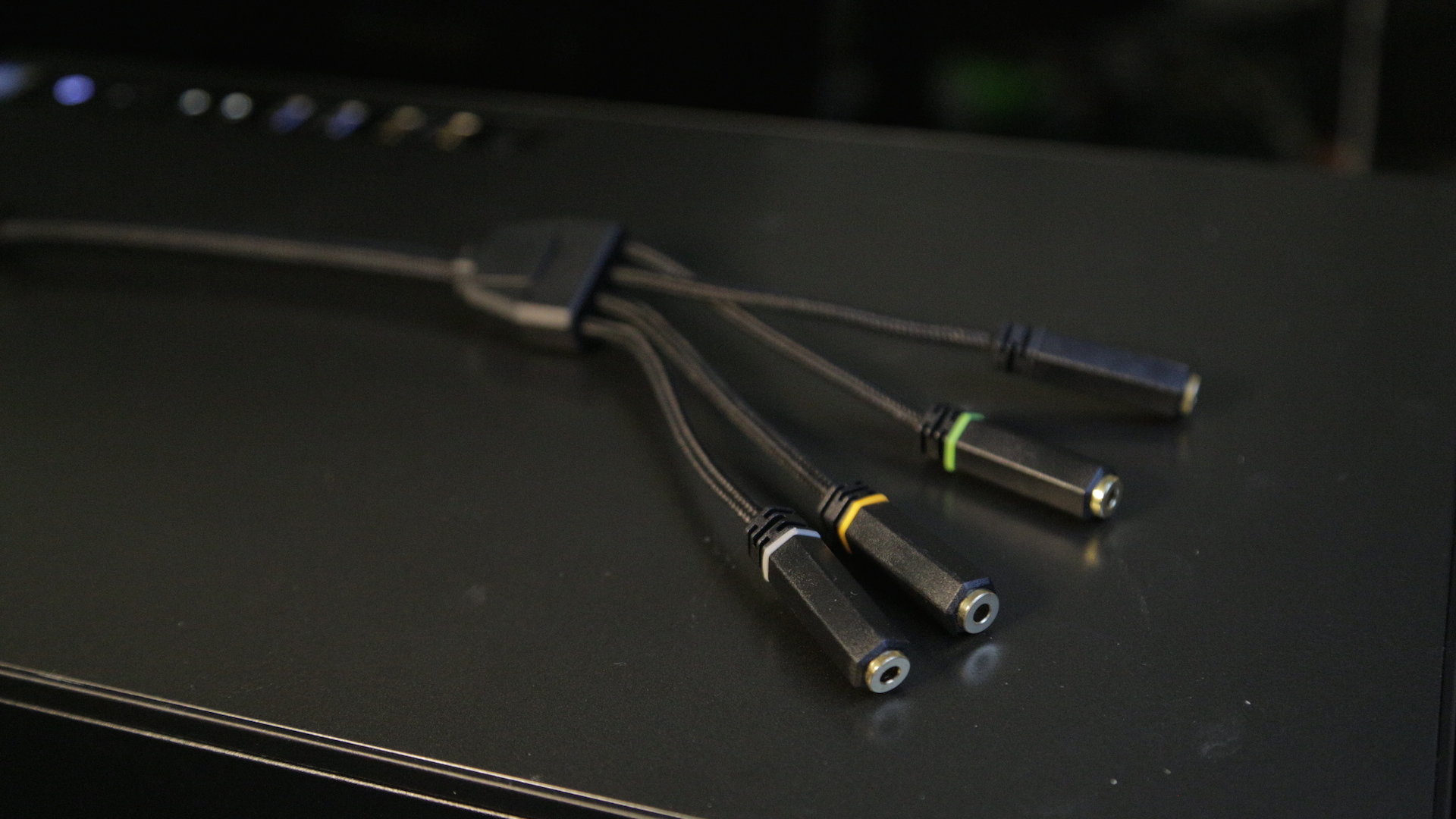
It’s got one last, very smart addition: the Sonic Radar Pro. After scanning your computer for compatible games (seemingly those with dedicated 5.1 and 7.1 audio option toggles), you can activate a radar overlay that sits at the lower center area of your screen in games, in addition to whatever interface features an individual game has.
This Radar Pro visualises the sounds coming into the headset, like the points of a compass. In other words, it lets you see where the sound of footsteps are coming from, giving you another cue from which to get the jump on your opponents. It may well offer an unfair advantage, but when you’re on top of the leaderboard, who cares?
Final verdict
Though it’s not one for the casual PC gamer – and isn’t intended to be used anywhere other than in front of your home desktop computer – demanding players will get a real kick out of the Asus ROG Centurion.
It’s a bold bit of gear, and its design may turn off those looking for a more discreet gaming audio solution. But, if you like your cans to look and sound as big as the frag-filled explosions they deliver, then Asus’s ROG Centurion 7.1 are certainly ones to consider.
Gerald is Editor-in-Chief of iMore.com. Previously he was the Executive Editor for TechRadar, taking care of the site's home cinema, gaming, smart home, entertainment and audio output. He loves gaming, but don't expect him to play with you unless your console is hooked up to a 4K HDR screen and a 7.1 surround system. Before TechRadar, Gerald was Editor of Gizmodo UK. He is also the author of 'Get Technology: Upgrade Your Future', published by Aurum Press.
